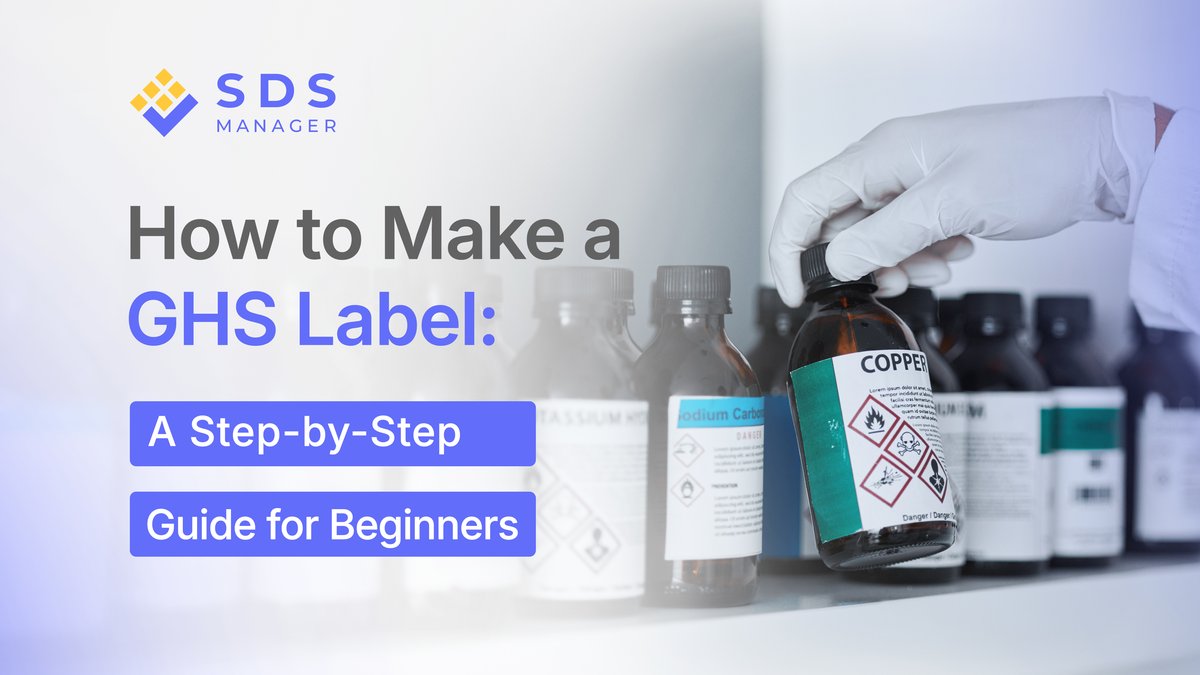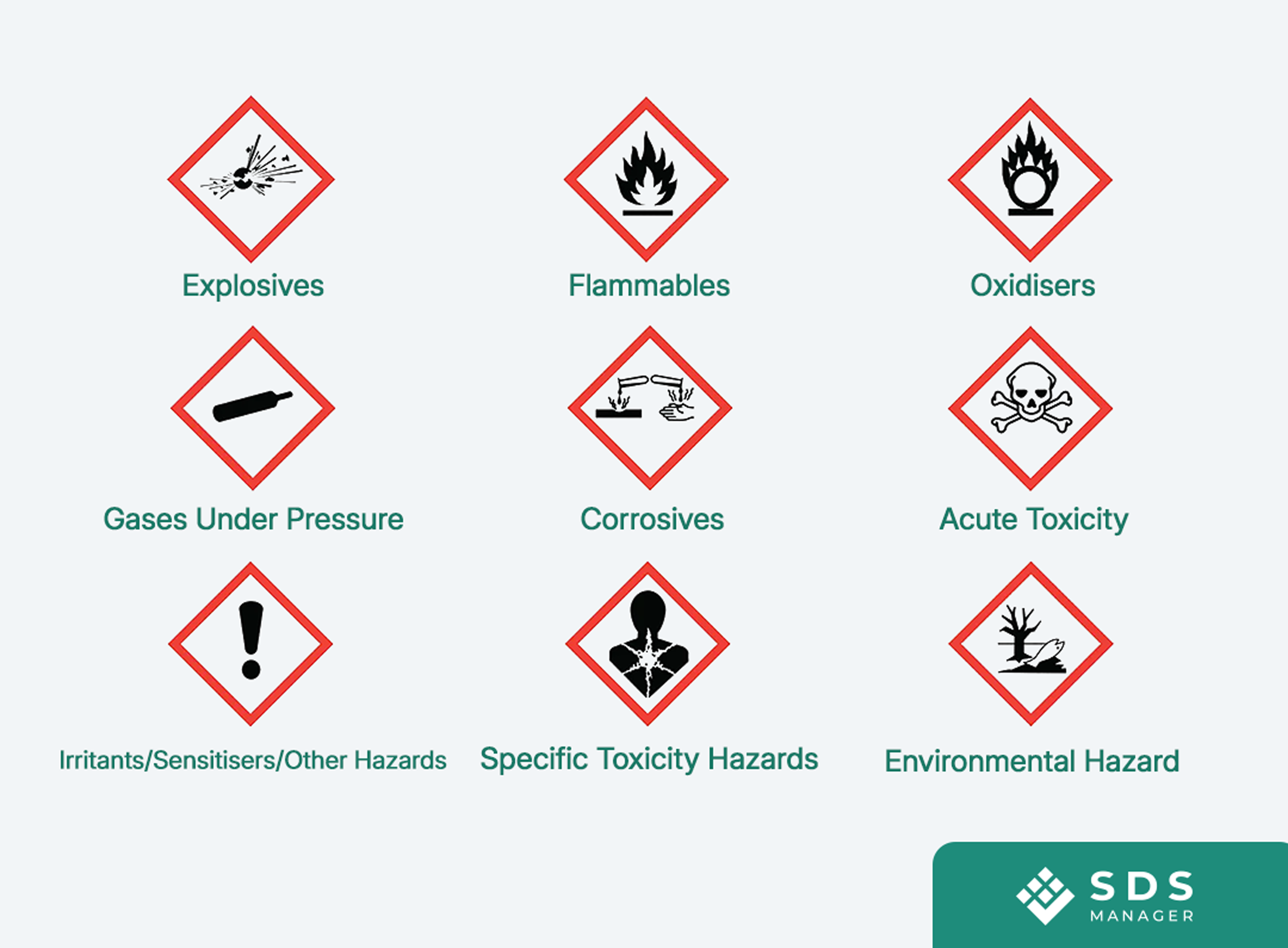

When your workplace handles hazardous chemicals, knowing how to create a GHS-compliant label is more than just good practice, it’s a legal requirement under Australia’s Work Health and Safety (WHS) Regulations. These regulations adopt the Globally Harmonized System (GHS) for chemical classification and labeling, with national guidance provided by Safe Work Australia.
This guide breaks it down into simple, actionable steps so you can take in confidently creating GHS labels that are both compliant and easy for your team to understand.
What Makes a Label "GHS-Compliant"?
A GHS-compliant label is one that meets the standards outlined by the Globally Harmonized System of Classification and Labelling of Chemicals (GHS), a system implemented in through the WHS Regulations and supported by Safe Work Australia, to ensure chemical hazards are communicated clearly and consistently across all workplaces.
To be compliant, a label must include six mandatory elements:
- Product Identifier
- Pictograms
- Signal Word
- Hazard Statements
- Precautionary Statements
- Supplier Information
Step-by-Step: Creating a GHS-Compliant Label
Creating a GHS label may seem complex at first, but it becomes straightforward once you understand what information is needed and how it all fits together. Here's a simple breakdown of the process:
Step 1: Identify the Chemical
Start by determining the product identifier, this is usually the chemical name, trade name, or mixture ID. It should exactly match the name listed on the Safety Data Sheet (SDS) for that substance. This ensures consistency and traceability.
Step 2: Refer to the Safety Data Sheet (SDS)
Your SDS is the go-to resource for all hazard classification details. Sections 2 (Hazard Identification) and 3 (Composition/Information on Ingredients) will tell you:
- The chemical’s classification
- Required pictograms
- Applicable signal word
- Hazard statements and precautionary statements
Always use the most up-to-date SDS version to keep your label accurate.
SDS Manager can help you keep your SDS library updated by automatically alerting you when new versions are available.
Step 3: Select the Appropriate Pictograms
Based on the chemical’s classification, choose the correct GHS pictograms. Each pictogram is a red diamond with a black symbol inside and represents a different hazard category, such as flammable, toxic, corrosive, etc.
Not every label will use all nine pictograms. Only include those relevant to the specific chemical’s hazards.

Step 4: Add the Signal Word
- Danger – used for the more severe hazard categories.
- Warning – used for less severe categories.
Either use “Danger” or “Warning” chosen based on the chemical's classification, as indicated in the SDS.
Use only one signal word, even if the chemical has multiple hazards. Use the one that corresponds to the most severe hazard of the chemical.
Step 5: Include the Hazard and Precautionary Statements
Copy the hazard statements exactly as written in the SDS. These describe the nature and degree of risk (e.g., “May cause respiratory irritation”).
Then include the appropriate precautionary statements, which cover:
- Safe handling (e.g., “Keep container tightly closed”)
- Storage instructions
- Personal protective equipment (PPE) use
- Emergency or first-aid measures
Step 6: Include Supplier Information
Clearly list the name, address, and phone number of the chemical’s manufacturer, importer, or distributor. This is essential for traceability and emergency contact.
Step 7: Format the Label Clearly
Now that you have all the elements, arrange them in a way that is easy to read. A typical GHS label will show:
- The product identifier at the top
- Pictograms grouped together
- Signal word and hazard statements near the pictograms
- Precautionary statements near the bottom
- Supplier details in a clearly marked section

Labeling Secondary Containers Is Also Required
GHS compliance doesn’t end with the original chemical container. If a hazardous chemical is transferred to a secondary container, such as a spray bottle or small storage jar, it must also be labeled according to GHS requirements.
At minimum, the label should include the product name (matching the SDS), applicable pictograms, a signal word, and relevant hazard and precautionary statements. This step is mandatory under WHS laws and GHS guidelines to ensure safety and hazard visibility at all times.
You can design the label manually, use workplace labeling software, or try online tools that automate the layout for you. SDS Manager offers afree GHS-compliant secondary label generator that supports all standard label sizes and includes QR codes linking directly to the SDS. No design skills or regulatory expertise required, just enter the chemical details and print.
Ensure Safety Through Proper Labeling
Creating a GHS-compliant label may seem detailed at first, but once you understand the core elements and how to apply them, it becomes a simple, repeatable process. Accurate labeling is more than just a regulatory requirement, it’s a key part of protecting employees, preventing chemical accidents, and maintaining a safety-first workplace culture.
Managing GHS-compliant labels and Safety Data Sheets doesn’t have to be time-consuming.SDS Manager offers smart, user-friendly tools to help you stay compliant. From a free secondary label generator to QR-code access to SDSs, everything you need is in one place.
FAQs: Avoiding Common GHS Labeling Mistakes
What happens if I use an outdated SDS to create a label?
Using an outdated SDS may result in inaccurate hazard information and regulatory non-compliance.
Can I leave out elements like pictograms or supplier information if the label is small?
No, all six required elements must be included on every GHS label, regardless of container size.
How do I know which pictograms to include?
Only include the pictograms that correspond to the chemical’s classification as listed in the SDS.
Is it okay to use both “Danger” and “Warning” on the same label?
No, only one signal word representing the most severe hazard should be used per label.
Does label placement really matter?
Yes, labels must be clearly visible, legible, and securely attached to withstand workplace conditions.
Can I include extra safety notes or information on the label?
It’s best to limit label content to the mandatory elements and refer users to the SDS for further details.

